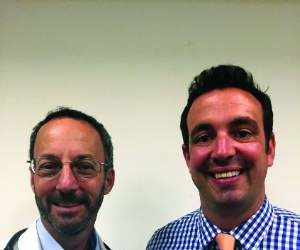EXPERT ANALYSIS FROM THE AADE ANNUAL MEETING
SAN DIEGO – Weight loss isn’t always a top priority for people with diabetes. Patients can figure out their proper carb intake. And don’t fret over an optimal percentage mix of carbs, fat and proteins.
A nutrition consultant gave this advice to colleagues at the annual meeting of the American Association of Diabetes Educators, startling some of those in the audience. And no wonder: A few years ago, these kinds of tips would have surprised the educator herself, Mary Ann Hodorowicz, RN, MBA , a licensed registered dietitian and certified diabetes educator based in the Chicago area.
For instance, she was taught that specific percentages of our diets must come from carbohydrates, protein, and fat. “If you didn’t do it that way, you committed the most major mortal sin,” she said. “You’ll go to diabetes jail, and you’ll probably be fired from your job, and the patient will die.”
In fact, “there’s no evidence to support those percentages,” she said. “They don’t mean anything in terms of blood glucose control, although we do have percentages of fat to control lipids and percentages of protein for health and well-being.”
So how many carbs should diabetics eat? She acknowledges to patients that she doesn’t know: “I don’t have a clue.” Instead, she urges them to figure it out themselves: “How many can you get away with and reach your 2-hour post-meal target? My job is to teach you what how to measure, whether it’s by handfuls, exchanges, servings, or grams. Here’s a log sheet, go home and write about how many carbs you’re eating, and test your blood sugar 2 hours later. You’ll find out really quickly how many carbs you can eat to reach that post-meal target.”
Ms. Hodorowicz provided other “evidence-based” tips about nutrition for diabetes patients:
• Assess the need for weight loss in overweight and obese patients, and don’t assume that weight loss is always the top priority.
In new patients with type 2 diabetes, weight loss of 7% is optimal and can typically be achieved with an energy deficit of 500-750 calories a day: a limit of 1,200-1,500 calories for women and 1,500-1,800 for men.
However, “studies of sustained weight loss at 1 or more years have shown inconsistent effects on hemoglobin A1c, even though modest weight loss is shown to improve insulin resistance in overweight and obese insulin-resistant persons. This blows out what we’ve been taught in our careers,” she said.
Why? Weight reduction does improve blood glucose in these type 2 patients at first, she said, but they’ll go into insulin deficiency if they live long enough.
After that happens, she said, “weight loss is not that effective in controlling blood glucose. At that point, the gurus are saying that we really want to prevent weight gain and seek blood glucose control.”
• Don’t go overboard on the glycemic index.
Ms. Hodorowicz advises patients to substitute low-glycemic foods for high-glycemic foods. However, “the evidence does not support the glycemic index as the best meal planning strategy for a patient with diabetes. It doesn’t do better than controlling carbs.”
In addition, she said, teaching patients about the confusing glycemic index is a drag: “Good luck!” But, she said, “substituting foods is a good thing.”
• Be aware of the limited evidence supporting supplements for glucose control.
On the supplement front, chromium, cinnamon, herbs and vitamin D haven’t been clearly demonstrated to control glucose, she says.
• Encourage consumption – even via supplementation – of fiber and plant stanols and sterols.
Ms. Hodorowicz encourages patients to consume 1.6-3.0 grams a day in plant stanols and sterols, which can be purchased in over-the-counter capsules and via fortified foods like certain Minute Maid and Benecol products.
“You’re fooling the body into thinking it’s cholesterol,” she said, “but it’s innocuous.”
She also advises patients to boost viscous soluble fiber to 7-13 g/day. Since it’s not feasible to do this through food, she recommends supplements: “You really need to supplement your diet with psyllium fiber that you get in a bottle.”
Ms. Hodorowicz reported having no relevant financial disclosures.




